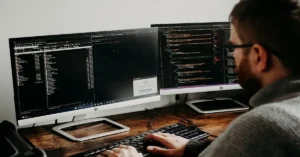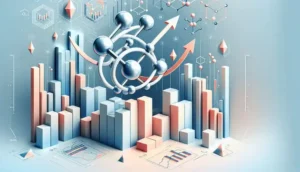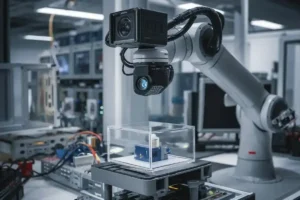Norissa Valdez: Unveiling the Leaks
In an era defined by the rapid exchange of information, leaks have become a powerful tool for exposing corruption, revealing hidden agendas, or simply shedding light on what was meant to remain concealed. Yet, these leaks come at a cost—not just to the institutions they target, but to the people who become intertwined in their wake. One such person is Norissa Valdez, a name now linked to a series of high-profile leaks that shook both the public and private sectors. This article delves deep into the life of Norissa Valdez, examining her role in the leaks, the consequences she faced, and the broader implications of her actions.
1. Who is Norissa Valdez?
Norissa Valdez may not have been a household name before the leaks, but she quickly became one when her involvement in a major data breach caught the public’s attention. Valdez, a former employee of a prominent tech company, was initially known for her quiet but determined work ethic and her sharp understanding of the inner workings of the organization’s operations. She worked in a mid-level position in the company’s cybersecurity and data analytics division, which gave her access to sensitive company information.
Before the leaks, Valdez’s colleagues and superiors praised her dedication and technical prowess. Little did they know that the same skills she was lauded for would soon be used for something far more controversial. Although Valdez had no direct history of whistleblowing or activist behavior, her position in the company allowed her to gather insight into issues that would later become crucial to the leaks.
2. The Leaks: What Happened?
The leaks that Valdez became associated with were not merely a result of one disgruntled employee’s decision to reveal company secrets. Instead, they were part of a much larger and more complex series of incidents that involved several key individuals, including former employees and anonymous whistleblowers. The leaks involved internal communications, confidential emails, financial data, and strategic plans—all of which were meant to remain hidden from the public eye. The content exposed corruption, questionable business practices, and unethical treatment of workers within the organization.
Initially, the leaks were thought to be the work of hackers. However, as investigations progressed, it became clear that Valdez had played a pivotal role in obtaining and disclosing the information. While the leaks themselves were widely varied in scope—ranging from financial documents detailing corporate fraud to emails exposing internal harassment—what tied them together was the involvement of someone who had intimate knowledge of the company’s inner workings.
3. Norissa Valdez’s Involvement: Motive and Method
Understanding Norissa Valdez’s role in the leaks requires a deeper look at her motivations. Was she a whistleblower acting out of moral conviction, or was she driven by something more personal? In interviews with former colleagues and people close to Valdez, it became apparent that her actions were a complex mix of both.
Some argue that Valdez was motivated by a desire to expose the unethical practices she had witnessed in her workplace. Over time, she grew disillusioned with the company’s treatment of workers and the exploitation of its resources. However, it wasn’t just her frustration with corporate policies that led her to act. Valdez, according to sources, had developed a strong sense of justice after observing how the company’s leadership manipulated both public perception and internal audits.
Yet, there was also a more personal element to the situation. Valdez had been passed over for promotions multiple times, and her grievances about being overlooked for higher positions contributed to her growing resentment. As a result, some speculate that the leaks were an act of retaliation—a way to expose the company’s secrets in the hopes of diminishing its power.
Technically, Valdez’s role was both sophisticated and calculated. Using her position, she gained access to sensitive systems and downloaded a series of confidential files. Rather than releasing the entire set of documents at once, she strategically released them over a period of weeks to keep public attention focused on the issue. The leaks were meticulously timed to coincide with major corporate events, ensuring maximum media coverage.
4. The Fallout: Reactions and Consequences
The immediate aftermath of the leaks was a media frenzy. Journalists from around the world picked up on the story, with headlines calling out the company for its unethical practices and covering Valdez’s role in the affair. Public opinion was divided—many viewed Valdez as a hero, a whistleblower who took a stand against corporate corruption. Others, however, saw her actions as a betrayal and a violation of trust.
Internally, the company faced significant fallout. Several senior executives were forced to step down or were placed under investigation. The company’s stock price plummeted as investors began to question its stability and credibility. Legal teams scrambled to assess the extent of the damage caused by the leaks, which not only exposed sensitive information but also posed a significant security risk to the company’s clients.
For Valdez, the consequences were even more personal. She was fired from her position, with the company accusing her of breaching confidentiality agreements. Legal proceedings followed, with Valdez facing potential criminal charges for her role in the leaks. However, she maintained that her actions were justified, emphasizing the moral obligation to expose the truth, even if it meant facing severe consequences.
In the wake of the leaks, Valdez’s life was turned upside down. Despite legal pressures, she became a symbol for many who championed transparency, ethics, and justice in corporate settings. Media outlets, while sensationalizing her story, also highlighted the broader issue of corporate accountability, with Valdez’s story becoming a rallying cry for others in similar situations.
5. Legacy and Implications
The leaks that Norissa Valdez was associated with sparked intense debate about the fine line between ethical whistleblowing and corporate sabotage. On one hand, the leaks shed light on practices that many felt needed to be exposed for the greater good. On the other, they raised concerns about the potential dangers of undermining corporate confidentiality and trust.
Valdez’s actions triggered a larger conversation about the role of employees in exposing corporate wrongdoing. They reignited the debate over the effectiveness of traditional reporting channels within organizations and whether they offer enough protection to those who choose to speak out. Could there have been a better way for Valdez to address her concerns, or did the leaks represent the only viable means of revealing the truth?
Furthermore, Valdez’s story has highlighted the precariousness of modern cybersecurity and the need for better safeguards against internal threats. As organizations increasingly rely on digital systems, the potential for data breaches from within becomes a significant concern.
6. Conclusion
Norissa Valdez’s story is one of complexity, moral ambiguity, and consequences. While some may view her as a hero who exposed corruption at great personal cost, others may see her as a disgruntled employee who overstepped ethical boundaries. What is clear, however, is that her actions have ignited a critical conversation about the intersection of corporate power, employee responsibility, and transparency.
As the dust settles, the legacy of the leaks continues to shape the way companies view information security and the treatment of whistleblowers. Norissa Valdez may have been a central figure in this dramatic turn of events, but her story is far from over—its lessons are still unfolding, and its impact will likely be felt for years to come.











